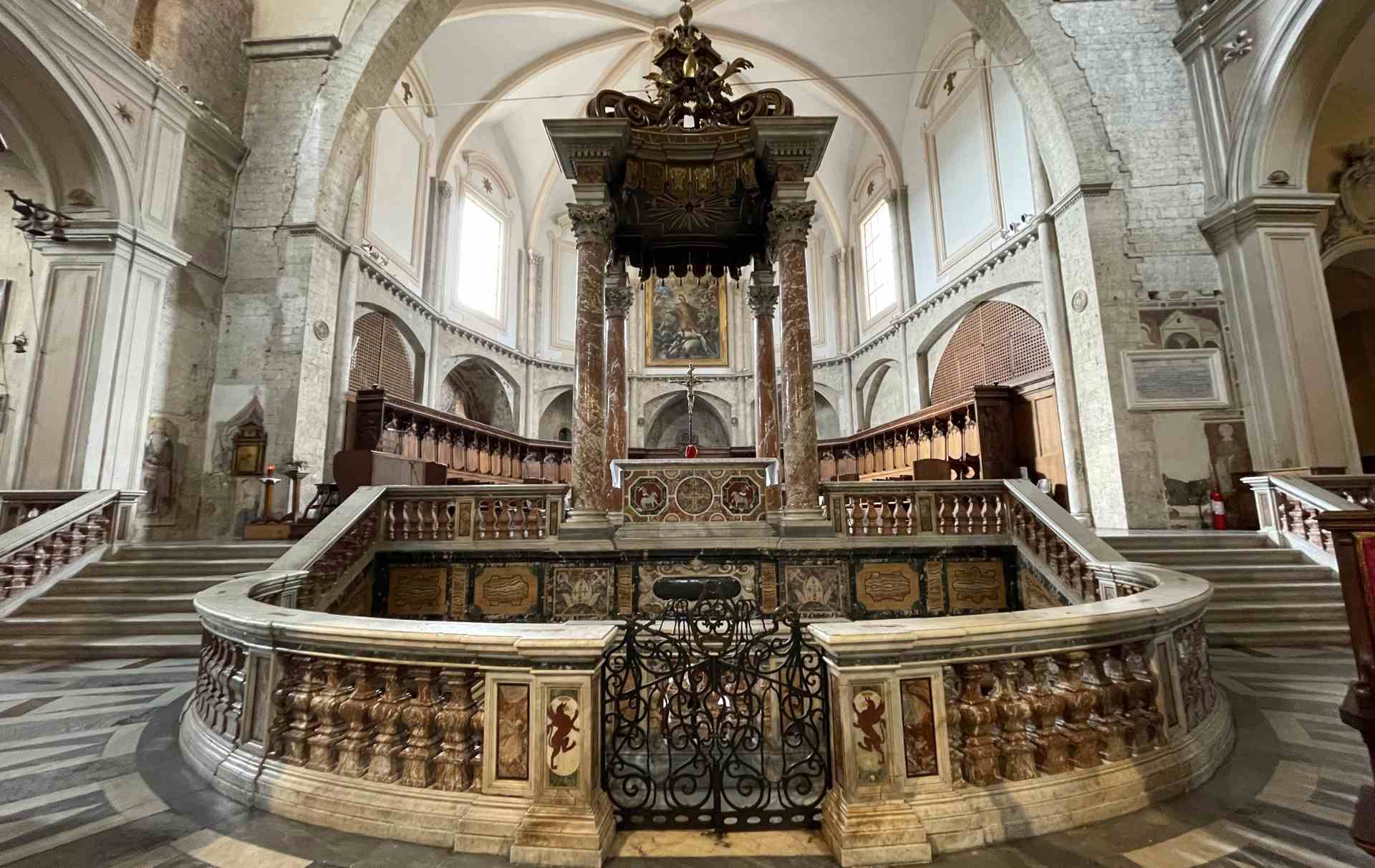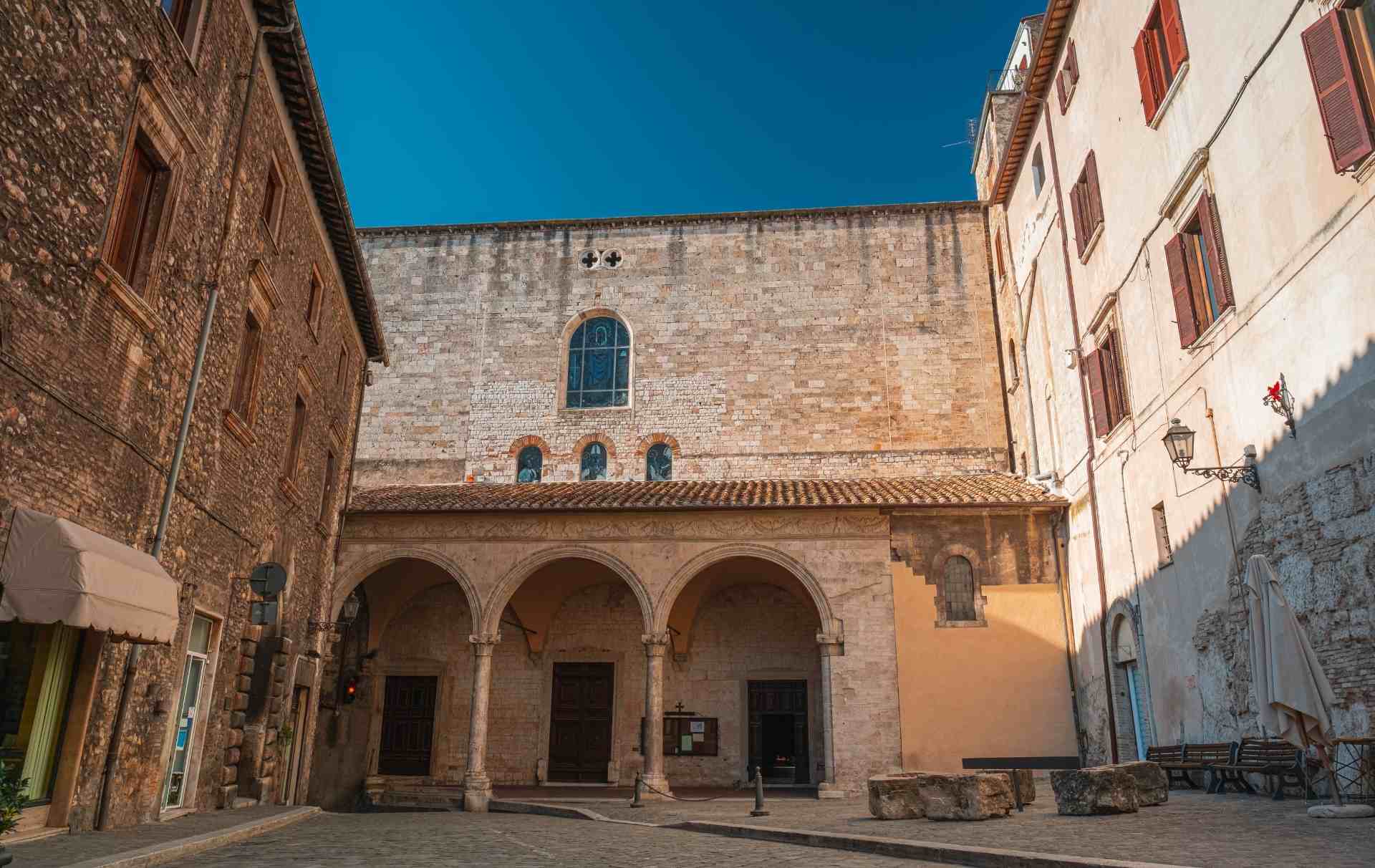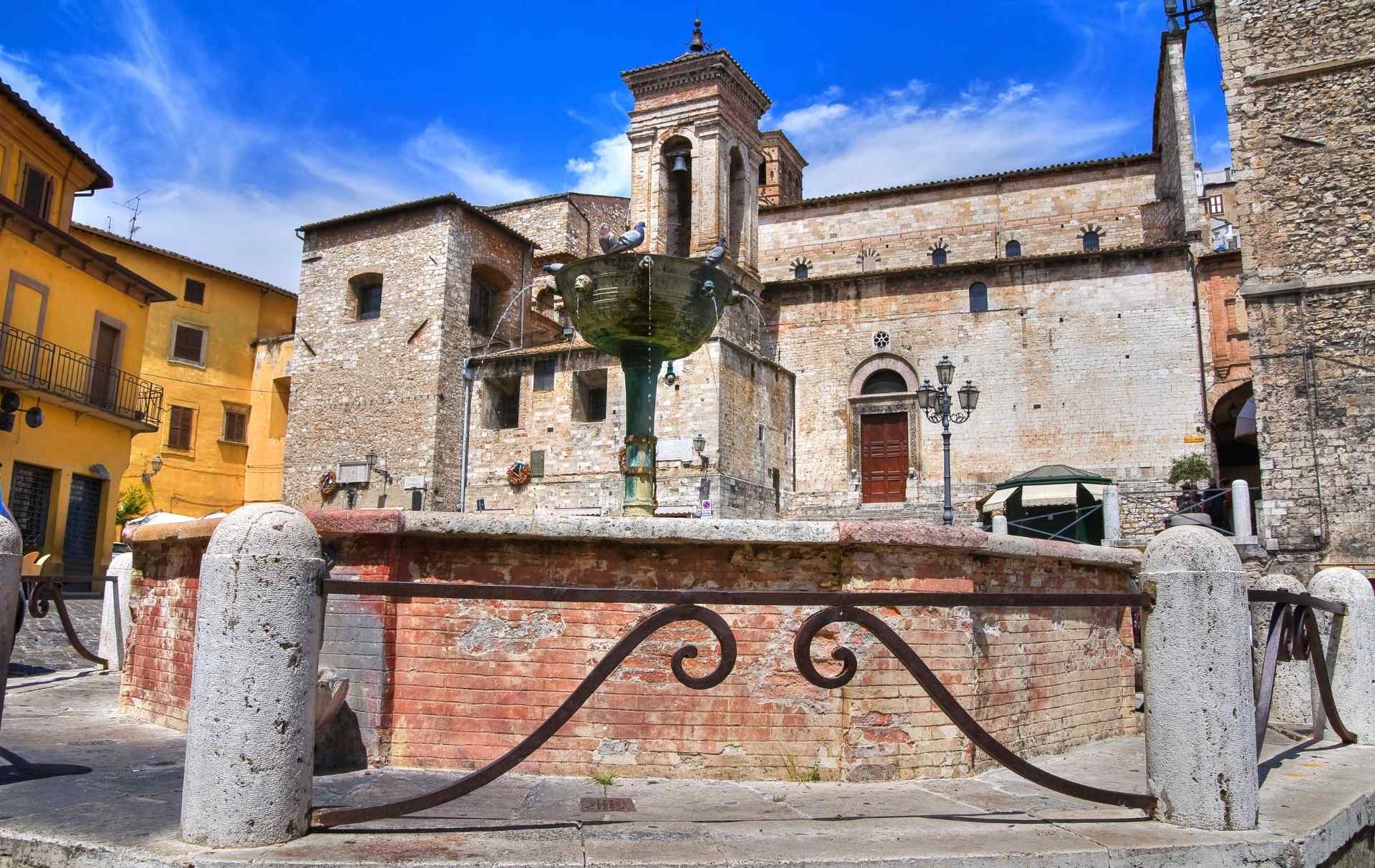Category: City of Narni

Characteristic and unique is the architectonic baroque complex, made from the second half of the XVII century , which includes the Major Altar, the Confession and the Crypt which preserves the relics of San Giovenale. The altar, the confession and the crypt: masterpieces of the Baroque period. The building works started in 1642 after that […]

Devoted to the first bishop of Narni who lived in the IV century BC, the Cathedral of San Giovenale is one of the most artistically, interesting and beautiful romanesque churches in Umbria. The Cathedral of San Giovenale and Cassio in Narni. Leaning against the romans’ walls and overlooking with its lateral door on the Piazza […]

Facing Piazza Garibaldi, with the entrance to Piazza Cavour, the Palazzo Vescovile (Bishop’s palace) is one of the most impressive buildings of the old town of Narni. The bishopric in the city of Narni. The building was built in the Middle Age next to the Cathedral, and was then restored in the Seventeenth century by […]

Piazza Garibaldi (Garibaldi Square) was once called Lake Square or Lacus square because of a large cistern used during the Middle Ages to provide water during sieges. Today the square is the center of Narni and the cistern has become an adventure path, which tell the importance and value of water. The square in the […]

The Church of Santa Margherita was built in the heart of the town of Narni, at the beginning of the XVII century. Near the building that was the monastery of the Benedictine nuns, now suppressed. The Church of Santa Margherita: the pearl of Baroque. The architecture of the church is late sixteenth century: the particularity […]

The majestic Narni is placed to dominate that gorge made by the Nera river which gave it the name. Is an ancient city rich of history, art and tradition, a beautiful place to visit in Umbria. The city of Narni. Narni was the Nequinum of Umbrian people which slowed down the Romans in their advance towards […]

Ternana Gate, a medieval door, is one of the principal entrance to the medieval walls of the town of Narni. The gate is mentioned in the municipal statutes of the 1371 as de Arvoltis (i.e delle Arvolte), maybe for the numerous curves that you need to cross to reach it going up the slope along […]


